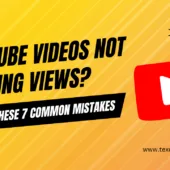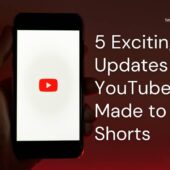As an business founder / Marketing Team, determining the right marketing strategy is crucial to growing your brand. With the surge of digital platforms, many businesses in India are now wondering: Should we continue with traditional marketing methods or focus on digital marketing? Both approaches have their advantages, but which one suits your brand best?
Traditional Marketing: A Time-Tested Approach
Traditional marketing in India includes advertising through television, radio, newspapers, magazines, and outdoor billboards. These channels have been widely used for decades and continue to have a broad reach across urban and rural areas.
Benefits of Traditional Marketing:
Tangible Impact: Print materials such as newspapers, brochures, and flyers remain popular in India. Newspapers have a strong readership with The Times of India alone reaching over 15.2 million readers daily (Indian Readership Survey 2021).
Wide Local Reach: Television and radio are highly effective for targeting both urban and rural populations. As per BARC India, TV penetration in India stands at 210 million households in 2022, with a significant portion of the audience consuming regional content.
Brand Credibility: TV and newspaper ads often convey a sense of legitimacy. In fact, trust in newspaper advertisements remains strong in India, with 56% of consumers considering print ads credible (Statista, 2023).
However, traditional marketing is costly and offers limited flexibility to track consumer behavior in real-time.
Digital Marketing: The Future of Advertising
Digital marketing in India has seen exponential growth in recent years. With over 900 million internet users projected by 2025 (Statista), it offers an unprecedented opportunity for brands to connect with consumers.
Benefits of Digital Marketing:
Precise Targeting: Digital platforms allow businesses to target specific demographics. In India, platforms like Google and Facebook provide advanced targeting tools that help brands reach the right audience, whether by location, age, or interest.
Cost-Effective: Digital marketing campaigns are more budget-friendly compared to traditional media. Indian brands investing in digital marketing have seen a higher return on investment, with digital ad spending in India projected to reach ₹42,420 crore by 2024 (GroupM).
Measurable Results: Tools like Google Analytics and social media insights offer real-time feedback. This enables brands to adjust their strategies quickly, making the most of every ad rupee spent.
Massive Reach: India is the largest market for Facebook, with over 330 million users (Statista, 2023). The country is also rapidly growing its Instagram and YouTube audiences, making digital platforms a prime place for businesses to reach customers.
Traditional vs. Digital Marketing: The Numbers in India
Reach: Television still has massive reach in India, especially in rural areas, where 69% of households own a TV (BARC India). However, digital platforms are catching up fast, with internet users expected to make up 64% of the population by 2025 (Statista).
Cost: Traditional media like TV and print can be expensive. A 30-second prime-time ad on TV costs upwards of ₹1 lakh to ₹5 lakh depending on the channel and time slot. In contrast, small digital campaigns can be run on platforms like Google or Facebook with a daily budget as low as ₹500.
Engagement: Digital marketing facilitates two-way communication between brands and customers, something traditional marketing lacks. Social media marketing in India has high engagement rates, with Instagram boasting a 4.2% interaction rate on posts (Talkwalker, 2023).
ROI: In India, businesses report better returns on investment through digital marketing than traditional marketing. A KPMG report revealed that digital campaigns yield 4x higher conversions when compared to traditional methods.
Finding the Right Balance: Integrated Marketing
While digital marketing excels with precise targeting, cost efficiency, and real-time data, traditional marketing remains crucial for brands targeting rural areas or older demographics. A combined approach—integrated marketing—works best for many businesses.
For instance, you can run TV or newspaper ads to build broad brand awareness, while using digital marketing techniques like social media and search engine optimization (SEO) to engage customers and drive conversions. This way, you can capture various segments of the audience, maximizing your brand’s reach.
Conclusion: Which is Best for Your Brand?
For business founders / Marketing Team, choosing between traditional and digital marketing depends on your target audience, budget, and goals. Digital marketing offers flexibility, measurable results, and precise targeting. However, traditional marketing still holds value, especially in rural regions and with older generations.
In most cases, an integrated strategy will provide the best results. Texon Solutions can help you develop a well-rounded marketing approach tailored to your brand’s needs. Whether you want to grow your online presence or engage local customers through traditional methods, we’re here to guide you.
Ready to accelerate your business? Book a free consultation today and explore the perfect mix of traditional and digital marketing strategies.







